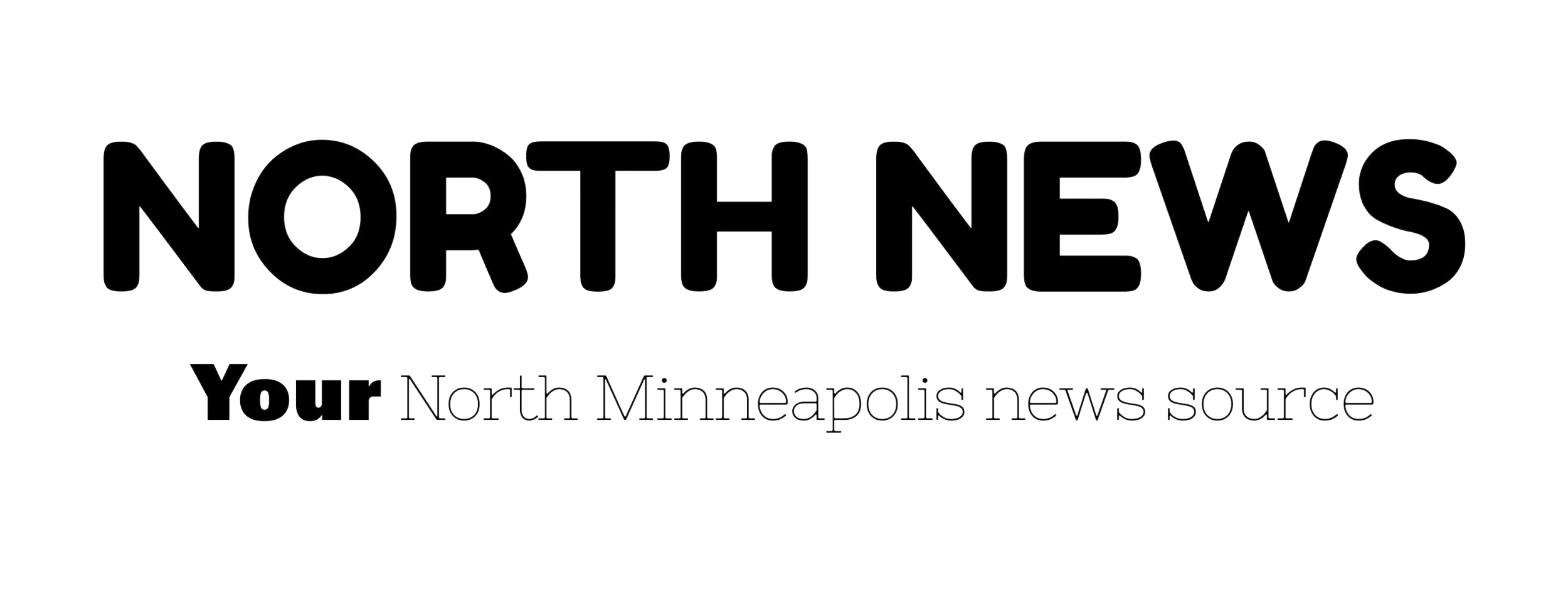Northsiders hit with tree removal orders invited to ‘visioning’ sessions
Sharon Griffin surveyed what remained of an ash tree that was cut down by order of the Minneapolis Parks and Recreation Board last year. The Harrison Neighborhood Association helped her pay for the removal. Photo by David Pierini
By David Pierini, Editor
Amoke Kubat looked out the window of her home in 2021 to see a man standing by her backyard shade tree. She thought he had picked her tree for a bathroom break; instead he picked the tree to be removed.
The man was a tree inspector with the Minneapolis Parks and Recreation Board and her ash tree, he told her, was diseased with emerald ash borer. He gave her 60 days to hire a tree service to have it removed at her expense or the Forestry Department would select one and send her the bill.
“So that began my battle,” Kubat said. And she would learn she was not the only property owner in North Minneapolis to face a tree removal order.
Kubat, a well-known author and artist, has organized two “Listening and Visioning” sessions for Northside residents impacted by tree removal orders at the Community Room at Cub Foods, 701 W. Broadway Ave. Sessions are scheduled for March 8 at 5 to 7 p.m. and March 11 from 1 to 3:30 p.m.
“I want people to brainstorm over what reparations looks like or how to make this right for them,” said Kubot, who paid $7,000 to have two tree removed. “How do we come together as a community and say, ‘Oh no, this practice stops.’”
More than 900 trees in the Northside zip codes of 55411 and 55412 have either been removed or tagged for removal as the Parks Board Forestry Department tries to halt or lesson the spread of the Emerald Ash Borer, a beetle that burrows under a tree’s park and eats the inner skin that transplants water and nutrients to its branches.
Native to northwest Asia, emerald ash borer was first detected in Minneapolis in 2010 and its slow spread through the city’s tree canopy has recently reached North Minneapolis. By state law, property owners are financially responsible for the removal of diseased trees and the Park Board has the authority to issue orders.
But many in North Minneapolis living on fixed or low incomes say the removals have wrought unexpected financial burdens. Depending on the service and where the tree is located, a large ash tree could cost $2,000 to $6,000. The only options to defray costs is to have the bill rolled in with property taxes over a five or 10-year period.
Last fall, North News profiled Harrison residents struggling with the financial impact. One resident said the Park Board provided a list of estimates from different tree services, the costs ranging from $4,000 to $15,000.
Since then, residents in other Northside neighborhoods have organized, speaking publicly at Park Board meetings and with environmental justice groups.
Many wonder why the Park Board did not present treatment options as the pest began to spread and feel blindsided by the orders and the rush to remove trees. Some have complained officials have been condescending and evasive with requests for information.
“Our messaging at the Parks Board has not been great,” said Commissioner Becka Thompson, who represents North Minneapolis on the board. “It is an impossible situation in many ways. The Park board is obligated to remove diseased trees through state statute. I think a lot of my colleagues are sensitive to the fact that it’s hitting my constituents the hardest right now.”
Thompson said the Park Board is lobbying state lawmakers to provide some sort of third option that would provide some sort of tax credit for low income residents faced with tree removal costs.
Kubat hopes the listening sessions she has organized will raise awareness and lead to some sort of relief or protection for the most vulnerable residents.
“This is just insane what is going on over here,” she said. “This is extracting Black wealth and it is displacing elders from their homes.”

